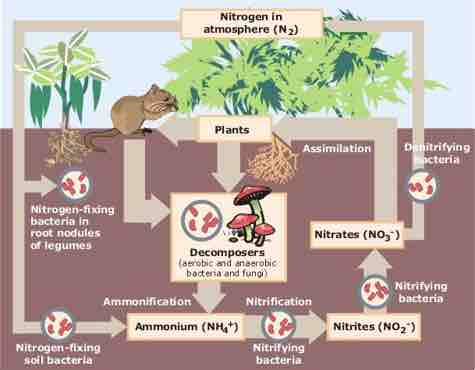Psychrophiles or cryophiles (adj. cryophilic) are extremophilic organisms that are capable of growth and reproduction in cold temperatures, ranging from −15°C to +10°C. Temperatures as low as −15°C are found in pockets of very salty water (brine) surrounded by sea ice. They can be contrasted with thermophiles, which thrive at unusually hot temperatures. The environments they inhabit are ubiquitous on Earth, as a large fraction of our planetary surface experiences temperatures lower than 15°C. They are present in alpine and arctic soils, high-latitude and deep ocean waters, polar ice, glaciers, and snowfields. Most psychrophiles are bacteria or archaea, and psychrophily is present in widely diverse microbial lineages within those broad groups. Psychrophiles are characterized by lipid cell membranes chemically resistant to the stiffening caused by extreme cold, and often create protein 'antifreezes' to keep their internal space liquid and protect their DNA even in temperatures below water's freezing point.
The Crenarchaeota (Greek for "spring old quality") (also known as Crenarchaea or eocytes) are Archaea that have been classified as either a phylum of the Archaea kingdom or a kingdom of its own. Initially, the Crenarchaeota were thought to be sulfur-dependent extremophiles but recent studies have identified characteristic Crenarchaeota environmental rRNA indicating the organism may be the most abundant archaea in the marine environment. Originally, they were separated from the other archaea based on rRNA sequences. However, other physiological features, such as lack of histones have supported this division, although some crenarchaea were found to have histones. Until recently all cultured Crenarchaea had been thermophilic or hyperthermophilic organisms, some of which have the ability to grow at up to 113 °C. These organisms stain Gram negative and are morphologically diverse having rod, cocci, filamentous and oddly shaped cells. Beginning in 1992, data were published that reported sequences of genes belonging to the Crenarchaea in marine environments making these bacteria psychrophiles or cryophiles. Since then, analysis of the abundant lipids from the membranes of Crenarchaea taken from the open ocean have been used to determine the concentration of these "low temperature Crenarchaea." Based on these measurements of their signature lipids, Crenarchaea are thought to be very abundant and one of the main contributors to the fixation of carbon. DNA sequences from Crenarchaea have also been found in soil and freshwater environments, suggesting that this phylum is ubiquitous to most environments.
Nitrification , as stated above, is formally a two-step process; in the first step ammonia is oxidized to nitrite, and in the second step nitrite is oxidized to nitrate. Different microbes are responsible for each step in the marine environment. Several groups of ammonia oxidizing bacteria (AOB) are known in the marine environment, including Nitrosomonas, Nitrospira, and Nitrosococcus. All contain the functional gene ammonia monooxygenase (AMO) which, as its name implies, is responsible for the oxidation of ammonia. More recent metagenomic studies have revealed that some Crenarchaeote Archaea possess AMO. Crenarchaeote are abundant in the ocean and some species have a 200 times greater affinity for ammonia than AOB, leading researchers to challenge the previous belief that AOB are primarily responsible for nitrification in the ocean.

Nitrogen Cycling
Nitrification is the biological oxidation of ammonia with oxygen into nitrite followed by the oxidation of these nitrites into nitrates. Degradation of ammonia to nitrite is usually the rate limiting step of nitrification. Nitrification is an important step in the nitrogen cycle in soil.